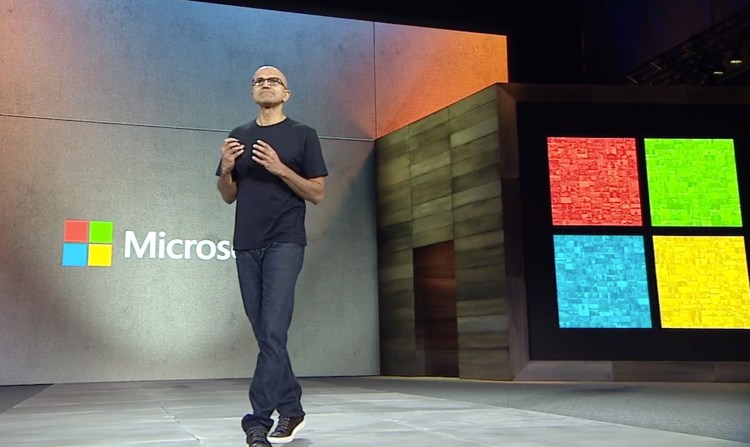Microsoft released its Q3 2017 earnings and they were an impressive indication that its pivot to the cloud is what will power this company long term. Indeed, while it slightly missed its expected revenues for the quarter, its profits were above expectations. This is a direct result of a shift to cloud-driven revenues that are largely (at least so far) immune to the declining market for sales of Windows on PCs and servers.
As I look at what Microsoft reported, here are some of the key highlights that are most indicative of where the company is going.
Azure
It was a very good quarter for Azure, with revenues almost doubling. The Intelligent Cloud business is now about 20 percent of revenues and growing faster than any other business. This should continue and shows that MSFT has now made the transition to a cloud company in a big way. More than 80 percent of Azure customers use premium services, not just base level easily commoditized and highly price sensitive services. This is very important as it shows that most companies aren’t buying on price alone and therefore the competition with AWS, which is expected to drive prices lower, isn’t having much of an effect at this point. This is very good news for Microsoft as many were worried that a price war with AWS and/or Google would hurt them. It seems enterprises are selecting Microsoft more than ever and for higher level services. Premium services for Azure creates product differentiation and is where Microsoft can most easily achieve margin expansion. Microsoft can get a premium over AWS because it has the ability to move people up the stack to the business process layer, creating more stickiness and higher growth.
Devices
Microsoft’s well received portable computing platform, the Surface, saw a sales decline of 26 percent. This indicates that the aging product needs a refresh badly. Price cutting and competing vendors’ products will continue to create declines until a new product is released, rumored for later this year. Mobile phones had no real impact, and of course, no future for Microsoft either, even if it releases the rumored Surface Phone, which in my opinion it shouldn’t. New devices like HoloLens and Surface Hub have an interesting future but will likely not contribute very much revenue for the foreseeable future.
June 5th: The AI Audit in NYC
Join us next week in NYC to engage with top executive leaders, delving into strategies for auditing AI models to ensure fairness, optimal performance, and ethical compliance across diverse organizations. Secure your attendance for this exclusive invite-only event.
Windows
Revenues for Windows installed on new machines is growing faster than the general decline of PCs (see Intel’s PC chip shipments, which were down for desktops about 7 percent year over year and about even for laptops). This is a result of a shift in sales towards higher level Windows (Pro) on a larger portion of machines, and of course this increases revenues for Microsoft. Windows sales on the server front are declining as more move to the cloud.
Productivity products
Dynamics 365 showed a huge growth rate (86 percent), and while it is still relatively smaller than other businesses, this shows many enterprises see Microsoft as a competitor to more established end user productivity solutions products. Office 365 revenues were up 45 percent, indicating the market for cloud based productivity apps is healthy and growing and that a growing number of Office users are shifting to a cloud based model, providing Microsoft with a recurring revenue stream. With a growing base of productivity users, integration of LinkedIn sales and jobs features to Dynamics 365 and Office 365, and products like Team, Microsoft is going directly after companies like Salesforce and Oracle, even if it doesn’t say so directly. Indeed, there are now more than 100 million active users on Office 365, with usage growing 35 percent year over year and revenues up 45 percent. This is a key element of Microsoft’s long term recurring revenues and growth, and it represents a huge base from which to upsell more targeted software solutions.
Cloud
Microsoft’s Cloud products are now at a $15.2 billion per year run rate. All of the cloud offerings from Azure to Office 365 to Dynamics 365 to Xbox One share a common platform. This enables Microsoft to leverage all its tools and solutions across the breadth of its products. High level services will be available in Azure first, but then flow to Office 365 and Dynamics 365 with relatively little effort. That makes Azure the first, but not the last part of the offerings to customers and gives Microsoft tremendous advantage in creating and deploying new services across its entire product line.
Bottom line: Microsoft continues to pivot to the cloud and expand from a company primarily known for its OS and Office infrastructure products to one that is a full service provider with a concentration on high value, high revenue potential enterprise level products. I give Satya Nadella high marks for pushing the company in this direction and making the right moves to get it to where it is currently. I expect more vertical solutions built on Microsoft’s cloud platforms to be increasingly competitive to vertical solution providers (e.g., Salesforce, Oracle, SAP, IBM) and would not rule out additional acquisitions to fill in its products requirements.
Jack Gold is the founder and principal analyst at J.Gold Associates, an IT analyst firm based in Northborough, MA., providing research and analysis of the many aspects of business and consumer computing, and emerging technologies. Follow him on Twitter @jckgld or LinkedIn at https://www.linkedin.com/in/jckgld.


